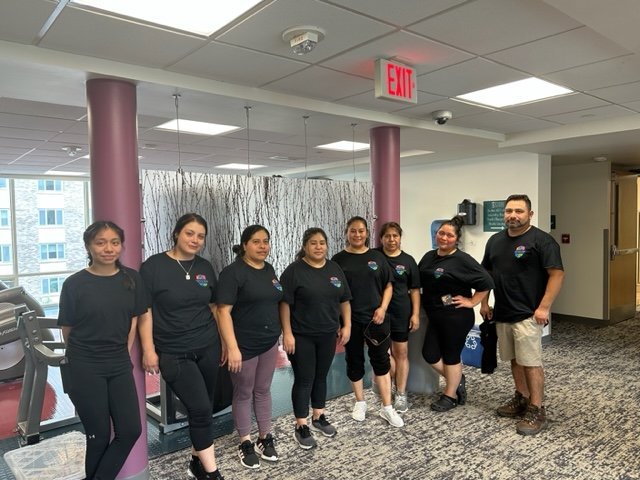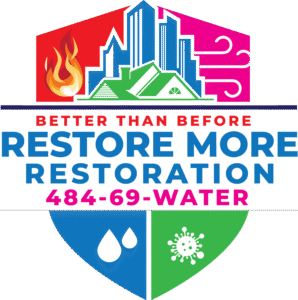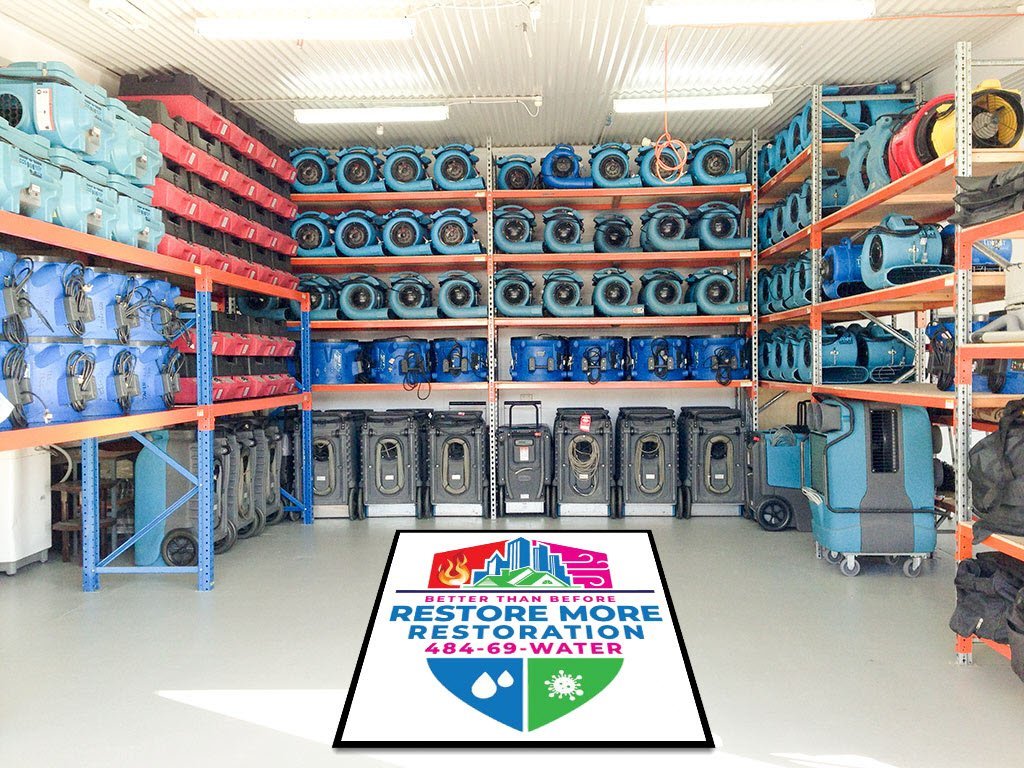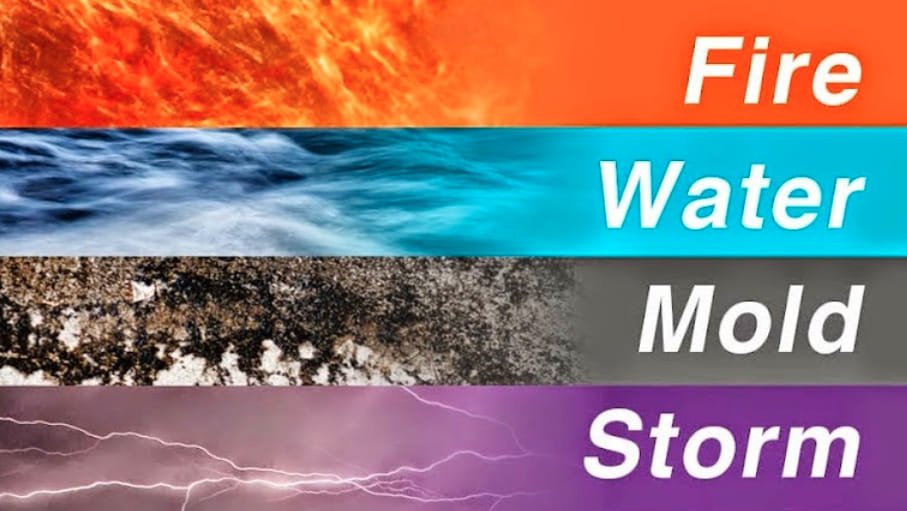Water Damage Restoration Cost Guide for Garnet Valley Homeowners
Understanding the costs associated with water damage restoration is crucial for Garnet Valley homeowners facing emergency water damage situations. Whether dealing with a burst pipe, storm flooding, or basement water intrusion, knowing what to expect in terms of restoration costs helps you make informed decisions, work effectively with insurance companies, and choose the right restoration professionals for your specific situation. Water damage restoration costs can vary significantly based on numerous factors, and understanding these variables helps ensure you receive fair pricing and quality service when your home needs professional restoration.
As water damage restoration experts serving Garnet Valley and Delaware County, we understand that cost transparency is essential for homeowners facing stressful emergency situations. Our partnership with RestoreMore365 has given us extensive experience in restoration pricing and insurance coordination, and we’re committed to helping our neighbors understand the factors that influence restoration costs and the value of professional restoration services.
Understanding Water Damage Restoration Cost Factors
Water damage restoration costs are influenced by numerous factors that must be evaluated on a case-by-case basis. According to the Institute of Inspection, Cleaning and Restoration Certification, understanding these cost factors is essential for both homeowners and restoration professionals to ensure appropriate pricing and quality outcomes.
Damage Severity and Classification
Water Damage Categories: Water damage is classified into three categories that significantly impact restoration costs. Category 1 (clean water) from sources like supply line breaks is the least expensive to remediate. Category 2 (gray water) from sources like washing machine overflows requires additional safety measures and specialized cleaning. Category 3 (black water) from sewage backups or flood water requires extensive safety protocols, specialized equipment, and often complete material removal, making it the most expensive to restore.
Damage Classes: The Institute of Inspection, Cleaning and Restoration Certification defines four classes of water damage based on the rate of evaporation and materials affected. Class 1 damage affects materials with low absorption rates and is least expensive to restore. Class 4 damage involves specialty materials like hardwood, plaster, and stone that require specialized drying techniques and significantly higher restoration costs.
Extent of Damage: The total area affected by water damage directly impacts restoration costs, with larger affected areas requiring more equipment, labor, and time to restore properly. Damage that affects multiple rooms or floors increases costs due to the complexity of containment, drying, and restoration procedures.
Structural Impact: Water damage that affects structural elements such as framing, subflooring, or foundation systems requires specialized assessment and repair techniques that increase overall restoration costs. Structural damage may also require permits and inspections that add to project timelines and costs.
Property-Specific Factors
Home Age and Construction: Older homes in Garnet Valley may have unique restoration challenges including asbestos-containing materials, lead paint, or outdated electrical systems that require specialized handling and increase restoration costs. Historic homes may require specialized restoration techniques and materials that preserve historical integrity while meeting modern safety standards.
Building Materials and Finishes: The type and quality of building materials and finishes significantly impact restoration costs. Hardwood floors, natural stone, and custom millwork require specialized restoration techniques and may need complete replacement if severely damaged. High-end finishes and materials generally cost more to restore or replace than standard materials.
Home Layout and Accessibility: Complex home layouts with multiple levels, tight spaces, or limited access can increase restoration costs due to equipment placement challenges and increased labor requirements. Basement restoration often costs more due to access limitations and the need for specialized equipment.
HVAC and Mechanical Systems: Homes with complex HVAC systems, radiant heating, or other specialized mechanical systems may require additional expertise and specialized procedures that increase restoration costs. Ductwork cleaning and system restoration can add significant costs to water damage restoration projects.
Geographic and Local Factors
Garnet Valley Market Conditions: Local market conditions in Garnet Valley and Delaware County affect restoration costs including labor rates, material costs, and equipment availability. The area’s proximity to Philadelphia provides access to specialized services but may also result in higher labor costs compared to more rural areas.
Permit and Code Requirements: Delaware County building codes and permit requirements can affect restoration costs, particularly for projects involving structural repairs or electrical work. Understanding local requirements helps avoid unexpected costs and delays during restoration projects.
Seasonal Demand Fluctuations: Restoration costs may fluctuate based on seasonal demand, with higher costs during peak storm seasons when demand for restoration services increases. Emergency services during high-demand periods may carry premium pricing due to limited availability.
Insurance Market Factors: Local insurance market conditions and claim frequency can affect restoration costs and insurance coverage availability. Understanding local insurance practices helps homeowners navigate cost considerations and coverage decisions.
Detailed Cost Breakdown by Service Type
Emergency Water Extraction and Mitigation
Initial Response and Assessment: Emergency response services typically range from $300-800 for initial assessment and emergency mitigation setup. This includes damage assessment, emergency water extraction setup, and initial moisture readings. Emergency response costs may be higher during off-hours, weekends, or holidays when immediate response is critical.
Water Extraction Services: Professional water extraction costs vary based on the volume of water, accessibility, and contamination level. Clean water extraction from easily accessible areas costs less than contaminated water removal from confined spaces. Extraction costs typically range from $3-7 per square foot depending on these factors.
Emergency Board-Up and Tarping: Emergency structural protection including board-up services and roof tarping typically costs $200-600 per opening or damaged area. These services prevent additional damage and are often covered by insurance policies as emergency mitigation expenses.
Initial Moisture Control: Emergency dehumidification and air movement setup costs vary based on the size of affected areas and equipment requirements. Initial moisture control typically costs $200-500 per day for equipment rental and setup, with costs continuing until proper moisture levels are achieved.
Structural Drying and Dehumidification
Professional Drying Equipment: Professional-grade dehumidification and air movement equipment rental typically costs $50-150 per piece per day, with most projects requiring multiple pieces of equipment. The total equipment cost depends on the size of affected areas and the time required to achieve proper drying.
Moisture Monitoring and Documentation: Professional moisture monitoring includes daily readings, documentation, and adjustment of drying procedures. Monitoring services typically cost $100-300 per day and are essential for insurance documentation and ensuring complete drying.
Specialized Drying Techniques: Specialized drying techniques for hardwood floors, plaster walls, or other materials requiring specific procedures can add $2-8 per square foot to drying costs. These techniques often require specialized equipment and expertise that justify higher costs.
Drying Duration Factors: Drying duration significantly impacts total costs, with typical residential projects requiring 3-7 days of professional drying. Factors that extend drying time include high humidity, dense materials, and complex building configurations that require longer drying periods.
Cleaning and Sanitization Services
Content Cleaning and Restoration: Personal property cleaning and restoration costs vary widely based on the type and value of items affected. Basic cleaning may cost $2-5 per item, while specialized restoration of electronics, artwork, or documents can cost $50-500 per item depending on complexity and value.
Structural Cleaning: Cleaning of structural elements including walls, ceilings, and floors typically costs $1-4 per square foot depending on the level of contamination and cleaning required. Antimicrobial treatments and specialized cleaning products may add to these costs.
HVAC System Cleaning: Ductwork and HVAC system cleaning following water damage typically costs $300-1,500 depending on system size and contamination level. This service is often necessary to prevent mold growth and ensure indoor air quality following water damage.
Odor Removal Services: Professional odor removal using specialized equipment and techniques typically costs $200-800 depending on the severity of odors and the size of affected areas. Severe odor problems may require multiple treatments and specialized equipment.
Reconstruction and Repair Services
Drywall Replacement: Drywall removal and replacement typically costs $2-4 per square foot including materials and labor. This cost can increase for specialty drywall, textured finishes, or complex wall configurations that require additional labor and materials.
Flooring Restoration and Replacement: Flooring costs vary significantly based on material type and quality. Carpet replacement typically costs $3-8 per square foot, while hardwood restoration may cost $4-12 per square foot. Luxury materials and complex installations increase these costs substantially.
Insulation Replacement: Insulation removal and replacement typically costs $1-3 per square foot depending on insulation type and accessibility. Blown-in insulation is generally less expensive than batt insulation, while specialty insulation materials cost more to replace.
Trim and Millwork: Trim and millwork replacement costs vary based on material quality and complexity. Basic trim replacement costs $2-8 per linear foot, while custom millwork can cost $15-50 per linear foot depending on design complexity and material quality.
Insurance Coverage and Cost Considerations
Understanding Insurance Coverage
Covered Damage Types: Most homeowner’s insurance policies cover sudden and accidental water damage such as burst pipes, appliance failures, and storm-related damage. Understanding your policy’s specific coverage helps predict out-of-pocket costs and plan for restoration expenses.
Coverage Exclusions: Common exclusions include flood damage, gradual damage, and maintenance-related issues. Flood damage requires separate flood insurance, while gradual damage and maintenance issues are typically not covered by standard policies. Understanding exclusions helps homeowners plan for potential out-of-pocket expenses.
Deductible Considerations: Insurance deductibles directly affect out-of-pocket costs for restoration projects. Higher deductibles reduce premium costs but increase out-of-pocket expenses when claims occur. Understanding your deductible helps plan for immediate restoration expenses.
Coverage Limits: Policy coverage limits for dwelling, personal property, and additional living expenses affect the total insurance coverage available for restoration projects. Ensuring adequate coverage limits helps avoid out-of-pocket expenses for large restoration projects.
Working with Insurance Companies
Claims Process and Documentation: Proper claims documentation is essential for maximizing insurance coverage and minimizing out-of-pocket costs. Professional restoration companies provide detailed documentation that supports insurance claims and ensures appropriate coverage.
Adjuster Coordination: Insurance adjusters evaluate damage and determine coverage amounts based on policy terms and damage assessment. Professional restoration companies work with adjusters to ensure accurate damage assessment and appropriate coverage determinations.
Supplemental Claims: Additional damage discovered during restoration may require supplemental insurance claims. Professional restoration companies help identify and document additional damage to ensure complete coverage for all necessary restoration work.
Preferred Contractor Programs: Some insurance companies offer preferred contractor programs that may affect pricing and payment procedures. Understanding these programs helps homeowners make informed decisions about restoration service providers.
Maximizing Insurance Coverage
Professional Documentation: Professional restoration companies provide detailed documentation that supports insurance claims and maximizes coverage. This documentation includes moisture readings, damage assessments, and detailed repair estimates that justify restoration costs.
Scope of Work Development: Comprehensive scopes of work ensure that all necessary restoration activities are included in insurance coverage. Professional restoration companies develop detailed scopes that address all damage and necessary repairs.
Quality Standards: Insurance policies typically require restoration to pre-loss condition using materials of like kind and quality. Professional restoration companies ensure that restoration work meets these standards and provides appropriate documentation for insurance purposes.
Additional Living Expenses: Many policies provide coverage for additional living expenses when homes are uninhabitable during restoration. Understanding this coverage helps homeowners plan for temporary housing and related expenses during restoration projects.
Value Factors in Restoration Services
Professional Expertise and Certification
Industry Certifications: Professional restoration companies with industry certifications such as IICRC provide expertise that ensures proper restoration procedures and quality outcomes. Certified technicians understand proper restoration techniques and safety procedures that protect both property and occupants.
Specialized Equipment: Professional restoration companies use specialized equipment that provides more effective and efficient restoration than consumer-grade equipment. This equipment includes industrial dehumidifiers, air movers, moisture meters, and thermal imaging cameras that ensure complete restoration.
Technical Knowledge: Professional restoration companies understand building science, moisture dynamics, and material properties that affect restoration outcomes. This knowledge ensures that restoration work addresses all damage and prevents future problems such as mold growth.
Safety Protocols: Professional restoration companies follow safety protocols that protect both workers and occupants during restoration work. These protocols are particularly important for contaminated water damage and situations involving electrical hazards or structural damage.
Quality and Warranty Considerations
Workmanship Quality: Professional restoration companies provide quality workmanship that ensures long-term restoration success. Quality work may cost more initially but provides better value through reduced callbacks and warranty protection.
Material Quality: Professional restoration companies use quality materials that provide durability and performance appropriate for restoration applications. Quality materials may cost more but provide better long-term value and performance.
Warranty Protection: Professional restoration companies typically provide warranties on their work that protect homeowners from defects and problems. Warranty protection provides value and peace of mind that justifies professional restoration costs.
Insurance Coordination: Professional restoration companies coordinate with insurance companies to ensure proper claim handling and maximize coverage. This coordination provides value by reducing homeowner stress and ensuring appropriate insurance settlements.
Time and Convenience Factors
Rapid Response: Professional restoration companies provide rapid response that minimizes damage and reduces overall restoration costs. Quick response prevents secondary damage and reduces the scope of restoration work required.
Project Management: Professional restoration companies provide project management that coordinates all aspects of restoration work. This management ensures efficient completion and reduces homeowner stress during restoration projects.
One-Stop Service: Many professional restoration companies provide comprehensive services from emergency response through final reconstruction. This comprehensive service provides convenience and ensures continuity throughout the restoration process.
Minimal Disruption: Professional restoration companies work to minimize disruption to homeowners’ lives during restoration projects. This includes efficient work procedures, clean work practices, and coordination with homeowners’ schedules.
Cost-Saving Strategies and Considerations
Prevention and Maintenance
Preventive Maintenance: Regular home maintenance including plumbing inspections, roof maintenance, and HVAC servicing can prevent water damage and avoid restoration costs. Preventive maintenance is far less expensive than restoration and provides ongoing value.
Early Detection: Water leak detection systems and regular monitoring can identify problems before they become major damage events. Early detection allows for less expensive repairs and prevents extensive restoration costs.
Insurance Discounts: Some insurance companies offer discounts for homes with water leak detection systems, security systems, or other protective measures. These discounts can offset the cost of protective systems and reduce long-term insurance costs.
Home Improvements: Strategic home improvements such as sump pump installation, foundation waterproofing, or roof upgrades can prevent water damage and reduce restoration risks. These improvements provide long-term value and may qualify for insurance discounts.
Restoration Decision Factors
Repair vs. Replacement: Professional assessment helps determine when repair is cost-effective versus replacement. Sometimes replacement provides better long-term value than extensive restoration, particularly for older materials or systems.
Timing Considerations: Restoration timing can affect costs, with off-season work sometimes available at lower costs. However, emergency situations require immediate response regardless of timing considerations.
Scope Decisions: Homeowners may have options regarding restoration scope, such as upgrading materials or making improvements during restoration. These decisions affect costs but may provide long-term value and improved property performance.
Professional vs. DIY: While some restoration work can be performed by homeowners, professional restoration often provides better value through expertise, equipment, and warranty protection. Understanding the limits of DIY work helps make appropriate decisions.
Financing and Payment Options
Insurance Claim Advances: Many insurance companies provide claim advances that help cover immediate restoration costs. Understanding advance procedures helps manage cash flow during restoration projects.
Restoration Company Financing: Some restoration companies offer financing options that help homeowners manage restoration costs. These options can be particularly valuable for large restoration projects or when insurance coverage is limited.
Emergency Fund Planning: Maintaining emergency funds for immediate restoration costs provides flexibility and reduces stress during emergency situations. Emergency funds help cover deductibles and immediate expenses while insurance claims are processed.
Payment Scheduling: Professional restoration companies often provide flexible payment scheduling that aligns with insurance claim processing. This flexibility helps homeowners manage cash flow during restoration projects.
Garnet Valley-Specific Cost Considerations
Local Market Factors
Labor and Material Costs: Garnet Valley’s proximity to Philadelphia affects labor and material costs, with rates generally higher than rural areas but competitive within the regional market. Understanding local market conditions helps set appropriate cost expectations.
Contractor Availability: The availability of qualified restoration contractors in the Garnet Valley area affects pricing and scheduling. Established local contractors may provide better value through reduced travel costs and local knowledge.
Permit and Inspection Costs: Delaware County permit and inspection requirements affect restoration costs, particularly for projects involving structural work or electrical systems. Understanding local requirements helps budget for these additional costs.
Seasonal Demand: Seasonal weather patterns in Delaware County create demand fluctuations that can affect restoration costs. Understanding these patterns helps homeowners plan for potential cost variations.
Property-Specific Factors
Home Values and Standards: Garnet Valley’s property values and community standards may influence restoration decisions and costs. Higher property values may justify premium restoration materials and techniques that maintain property value.
Neighborhood Considerations: Neighborhood characteristics and homeowner association requirements may affect restoration decisions and costs. Understanding these factors helps plan appropriate restoration approaches.
Historic Property Considerations: Some Garnet Valley properties have historic significance that requires specialized restoration approaches. Historic restoration may cost more but preserves property character and value.
Insurance Market Conditions: Local insurance market conditions and claim frequency can affect coverage availability and costs. Understanding local insurance practices helps homeowners make informed coverage decisions.
Professional Service Selection
Choosing Restoration Contractors
Licensing and Certification: Ensure restoration contractors are properly licensed in Pennsylvania and carry appropriate certifications such as IICRC. Proper credentials ensure competency and provide protection for homeowners.
Insurance and Bonding: Verify that restoration contractors carry appropriate insurance and bonding that protects homeowners from liability and ensures financial protection. Proper insurance is essential for professional restoration work.
Local Experience: Choose restoration contractors with experience in Garnet Valley and Delaware County who understand local conditions, building codes, and insurance practices. Local experience provides value through knowledge and established relationships.
References and Reviews: Check references and reviews from other Garnet Valley customers to ensure quality service and customer satisfaction. References provide insight into contractor performance and reliability.
Service Evaluation Criteria
Response Time: Evaluate restoration contractors based on their ability to provide rapid emergency response when needed. Quick response is critical for minimizing damage and reducing overall restoration costs.
Equipment and Technology: Assess restoration contractors’ equipment and technology capabilities to ensure they can provide effective and efficient restoration services. Modern equipment provides better results and faster completion times.
Comprehensive Services: Consider restoration contractors who provide comprehensive services from emergency response through final reconstruction. Comprehensive services provide convenience and ensure continuity throughout restoration projects.
Insurance Coordination: Evaluate restoration contractors’ experience and capabilities in insurance coordination and claim processing. Effective insurance coordination maximizes coverage and reduces homeowner stress.
Cost Comparison and Evaluation
Detailed Estimates: Obtain detailed estimates that break down costs by service type and provide clear explanations of work to be performed. Detailed estimates help compare contractors and understand cost factors.
Scope Clarity: Ensure that estimates include clear scope definitions that specify exactly what work will be performed. Clear scopes prevent misunderstandings and additional costs during restoration projects.
Timeline Expectations: Understand timeline expectations and how they affect costs. Faster completion may cost more but provides value through reduced disruption and additional living expenses.
Value Assessment: Evaluate restoration contractors based on overall value rather than just cost. Consider expertise, equipment, warranties, and service quality when making selection decisions.
Conclusion
Understanding water damage restoration costs helps Garnet Valley homeowners make informed decisions when facing emergency water damage situations. While costs vary significantly based on damage severity, property characteristics, and service requirements, professional restoration provides value through expertise, equipment, and insurance coordination that ensures proper restoration and protects property value.
Remember that the lowest cost option is not always the best value, and professional restoration companies like RestoreMore365 provide expertise and service quality that justifies their costs through better outcomes and customer protection. When water damage affects your Garnet Valley home, focus on choosing qualified professionals who provide transparent pricing, quality service, and comprehensive restoration solutions.
For more information about water damage restoration services and emergency response, visit our comprehensive guides on water damage restoration, emergency water damage response, basement water damage, flood restoration, and storm damage cleanup. These resources provide detailed information about restoration services and help homeowners understand the value of professional restoration when water damage affects their homes.
Invest in quality restoration services that protect your home, your family, and your financial investment. Professional restoration may cost more initially, but it provides long-term value through proper restoration, warranty protection, and peace of mind when your home needs expert care.




